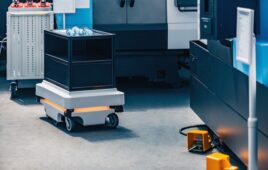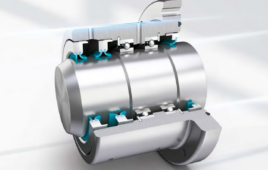A full-service metal fabrication company with secondary operations under one roof can cut OEM costs and lead times, satisfying rush orders and JIT requirements
With rising material costs, government regulations, and customers resisting price increases, today there is no room for waste in the metal fabrication supply chain.
While once OEMs had the time, margins, and procurement staff to afford 6 to 8 week lead-times for fabricated metal components subcontracted to layers of vendors, each taking their slice of profit and adding weeks of lead time, that is no longer the case.
OEM’s latest competitive advantage, it turns out, is one-stop precision metal fabrication, which streamlines the supply chain. Full-service metal fabrication under one roof can not only cut cost, lead time, and improve quality but also satisfy rush orders and JIT requirements.
Optimizing the Supply Chain
Traditionally, OEMs have relied on metal suppliers to provide parts using processes such as cutting, drilling, grinding, and polishing. However, secondary operations such as finishing, forming, coating, welding and assembly were completed by other companies, usually at different locations.
The problem with outsourcing to multiple vendors – all with their own processes, inspection, lead-times, shipping, freight costs and profit mark ups – is that it can inflate the cost of doing business. It can also delay orders weeks or months to the point of losing the order, particularly if errors occur and subcontractors engage in the finger pointing-blame game, rather than fixing the problem and expediting the order.
“The more layers of vendors involved, the slower the precision metal fabrication process and worse the transparency,” says Don Vitale, Vice President of Operations/Engineering at Clinton Industries, a York, Pa.-based designer and OEM of medical exam tables, treatment tables, blood drawing chairs, physical therapy equipment, and tubular steel medical accessories.
“If you have to juggle several subcontractors with limited capabilities to fill a large rush order, any delay can snowball,” adds Vitale. “One delay or error will impact the next vendor, since most vendors only understand their small piece of the puzzle.”
Recognizing the need to optimize the OEM supply chain, some custom metal fabricators have gradually expanded their in-house capabilities and upgraded their facilities and equipment to essentially act as a full-service metal fabrication company.
“To be truly a ‘one-stop’ metal component fabrication facility means delivering additional fabrication, finishing and assembly operations under one roof,” explains Gary Romig, Founder and CEO of Summit Steel and Manufacturing, a metal component fabrication provider located in Reading, Pa. “There are many metal parts manufacturers that claim to have additional capabilities, but in reality they simply farm it out to others.”
Romig gradually expanded his company’s metal working capabilities through a series of strategic corporate acquisitions, over decades. Today, Summit Steel offers a full-range of services from 2D and 3D laser cutting, CNC turning/milling, Swiss machining, and centerless grinding/polishing to bending/forming, powder coating, robotic and manual welding, and assembly at its plant.
“Shipping products to multiple vendor locations delays delivery, raises markup/transport costs, as well as increases the risk of transport damage and quality problems, if not properly inspected at each step,” says Romig. “This applies to metal part suppliers that purchase other companies or capabilities but do not bring them under one roof. This gives them a little more control, but does not eliminate the inefficiencies of cost, transport, and lead times moving products between different geographical locations.”
Instead of working with layers of vendors as he had previously, Vitale chose to streamline Clinton Industries’ supply chain by working with Summit Steel.
“Getting our metal parts from one source that does the work under one roof helps us meet our order commitments, even the large rush orders with a single point of contact,” says Vitale, who relies on Summit Steel for 2D and 3D laser cutting, CNC and Swiss machining, bending/forming, welding, and powder coating.
“It’s much faster to move components to value-added processes within the same building than to ship them to different vendors across the state or country,” says Vitale, adding that Summit Steel once expedited parts in as little as two days for a rush job.
“We’re saving about 10 to 15 percent in costs by eliminating unnecessary layers of subcontractor profit, shipping, packaging, accounting, and follow up,” he estimates.
Vitale says Clinton Industries further saves by working with a large metal fabrication company like Summit Steel that can purchase raw materials at mill-direct pricing.
Smaller machine shops typically buy in small quantities from metal service centers that include a middleman mark-up. Larger metal fabricators, on the other hand, have the buying power to purchase large quantities direct from the mill. These savings are then passed along to the OEM.
For Vitale, there is one additional competitive advantage to working with a one-stop shop: simplifying Clinton Industries’ quality auditing.
“Instead of having to track and audit several vendor subcontractors, I can monitor one full-service vendor. That’s easing our goal to become ISO 9001 certified, which should help us expand our North American and international markets,” says Vitale.
Filed Under: Industrial automation




